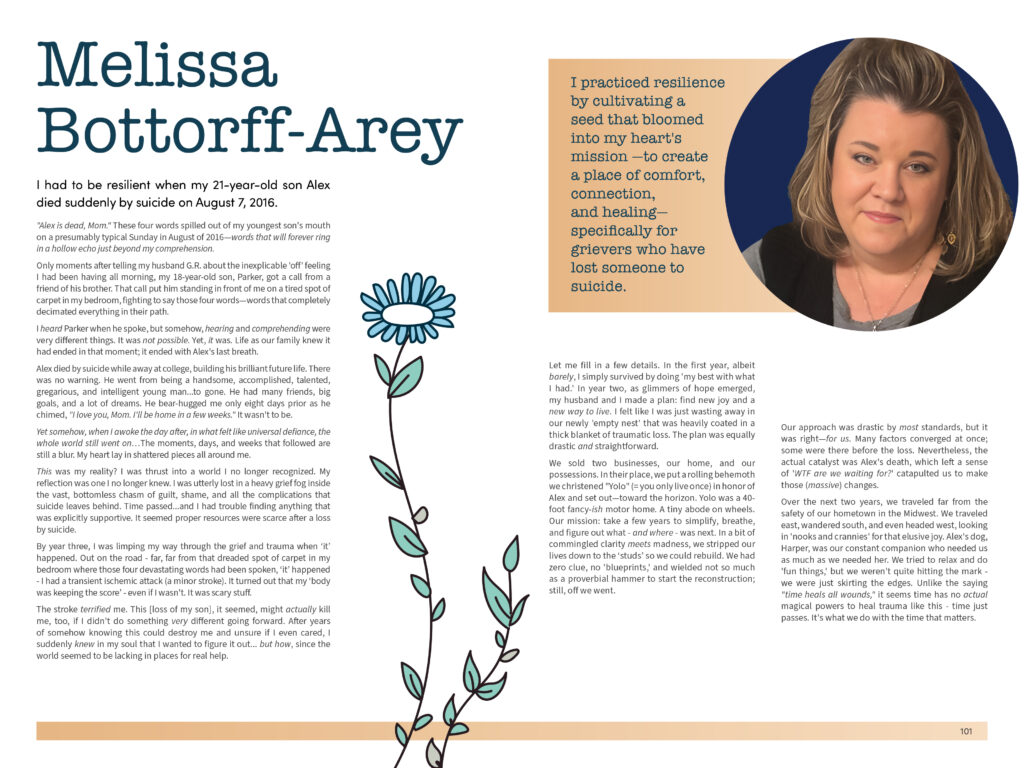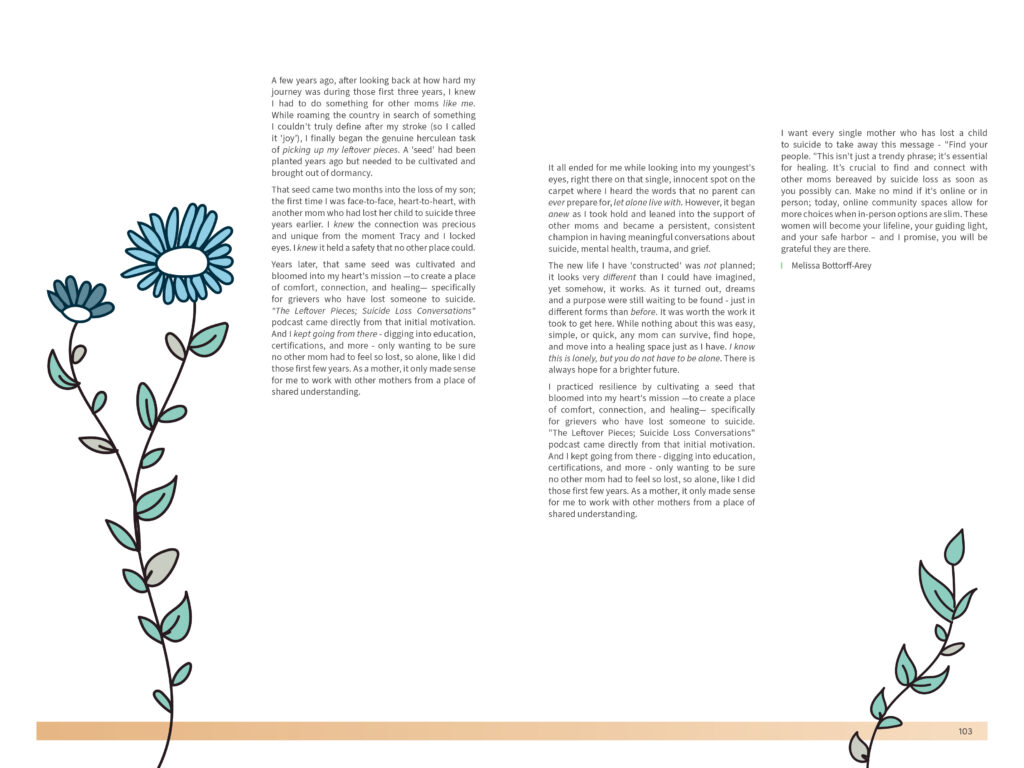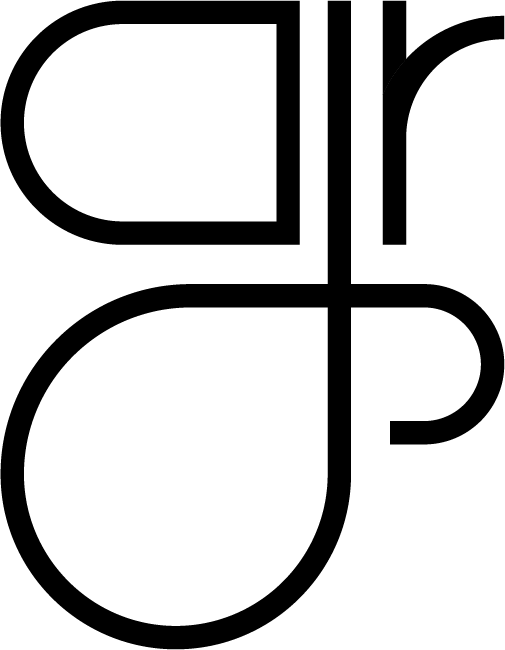I had to be resilient when my 21-year-old son Alex died suddenly by suicide on August 7, 2016.
“Alex is dead, Mom.” These four words spilled out of my youngest son’s mouth on a presumably typical Sunday in August of 2016—words that will forever ring in a hollow echo just beyond my comprehension.
Only moments after telling my husband G.R. about the inexplicable ‘off’ feeling I had been having all morning, my 18-year-old son, Parker, got a call from a friend of his brother. That call put him standing in front of me on a tired spot of carpet in my bedroom, fighting to say those four words—words that completely decimated everything in their path.
I heard Parker when he spoke, but somehow, hearing and comprehending were very different things. It was not possible. Yet, it was. Life as our family knew it had ended in that moment; it ended with Alex’s last breath.
Alex died by suicide while away at college, building his brilliant future life. There was no warning. He went from being a handsome, accomplished, talented, gregarious, and intelligent young man…to gone. He had many friends, big goals, and a lot of dreams. He bear-hugged me only eight days prior as he chimed, “I love you, Mom. I’ll be home in a few weeks.” It wasn’t to be.
Yet somehow, when I awoke the day after, in what felt like universal defiance, the whole world still went on…The moments, days, and weeks that followed are still a blur. My heart lay in shattered pieces all around me.
This was my reality? I was thrust into a world I no longer recognized. My reflection was one I no longer knew. I was utterly lost in a heavy grief fog inside the vast, bottomless chasm of guilt, shame, and all the complications that suicide leaves behind. Time passed…and I had trouble finding anything that was explicitly supportive. It seemed proper resources were scarce after a loss by suicide.
By year three, I was limping my way through the grief and trauma when ‘it’ happened. Out on the road – far, far from that dreaded spot of carpet in my bedroom where those four devastating words had been spoken, ‘it’ happened – I had a transient ischemic attack (a minor stroke). It turned out that my ‘body was keeping the score’ – even if I wasn’t. It was scary stuff.
The stroke terrified me. This [loss of my son], it seemed, might actually kill me, too, if I didn’t do something very different going forward. After years of somehow knowing this could destroy me and unsure if I even cared, I suddenly knew in my soul that I wanted to figure it out… but how, since the world seemed to be lacking in places for real help.
Let me fill in a few details. In the first year, albeit barely, I simply survived by doing ‘my best with what I had.’ In year two, as glimmers of hope emerged, my husband and I made a plan: find new joy and a new way to live. I felt like I was just wasting away in our newly ’empty nest’ that was heavily coated in a thick blanket of traumatic loss. The plan was equally drastic and straightforward.
We sold two businesses, our home, and our possessions. In their place, we put a rolling behemoth we christened “Yolo” (= you only live once) in honor of Alex and set out—toward the horizon. Yolo was a 40-foot fancy-ish motor home. A tiny abode on wheels. Our mission: take a few years to simplify, breathe, and figure out what – and where – was next. In a bit of commingled clarity meets madness, we stripped our lives down to the ‘studs’ so we could rebuild. We had zero clue, no ‘blueprints,’ and wielded not so much as a proverbial hammer to start the reconstruction; still, off we went.
Our approach was drastic by most standards, but it was right—for us. Many factors converged at once; some were there before the loss. Nevertheless, the actual catalyst was Alex’s death, which left a sense of ‘WTF are we waiting for?‘ catapulted us to make those (massive) changes.
Over the next two years, we traveled far from the safety of our hometown in the Midwest. We traveled east, wandered south, and even headed west, looking in ‘nooks and crannies’ for that elusive joy. Alex’s dog, Harper, was our constant companion who needed us as much as we needed her. We tried to relax and do ‘fun things,’ but we weren’t quite hitting the mark – we were just skirting the edges. Unlike the saying “time heals all wounds,” it seems time has no actual magical powers to heal trauma like this – time just passes. It’s what we do with the time that matters.
A few years ago, after looking back at how hard my journey was during those first three years, I knew I had to do something for other moms like me. While roaming the country in search of something I couldn’t truly define after my stroke (so I called it ‘joy’), I finally began the genuine herculean task of picking up my leftover pieces. A ‘seed’ had been planted years ago but needed to be cultivated and brought out of dormancy.
That seed came two months into the loss of my son; the first time I was face-to-face, heart-to-heart, with another mom who had lost her child to suicide three years earlier. I knew the connection was precious and unique from the moment Tracy and I locked eyes. I knew it held a safety that no other place could.
Years later, that same seed was cultivated and bloomed into my heart’s mission —to create a place of comfort, connection, and healing— specifically for grievers who have lost someone to suicide. “The Leftover Pieces; Suicide Loss Conversations” podcast came directly from that initial motivation. And I kept going from there – digging into education, certifications, and more – only wanting to be sure no other mom had to feel so lost, so alone, like I did those first few years. As a mother, it only made sense for me to work with other mothers from a place of shared understanding.
It all ended for me while looking into my youngest’s eyes, right there on that single, innocent spot on the carpet where I heard the words that no parent can ever prepare for, let alone live with. However, it began anew as I took hold and leaned into the support of other moms and became a persistent, consistent champion in having meaningful conversations about suicide, mental health, trauma, and grief.
The new life I have ‘constructed’ was not planned; it looks very different than I could have imagined, yet somehow, it works. As it turned out, dreams and a purpose were still waiting to be found – just in different forms than before. It was worth the work it took to get here. While nothing about this was easy, simple, or quick, any mom can survive, find hope, and move into a healing space just as I have. I know this is lonely, but you do not have to be alone. There is always hope for a brighter future.
I practiced resilience by cultivating a seed that bloomed into my heart’s mission —to create a place of comfort, connection, and healing— specifically for grievers who have lost someone to suicide. “The Leftover Pieces; Suicide Loss Conversations” podcast came directly from that initial motivation. And I kept going from there – digging into education, certifications, and more – only wanting to be sure no other mom had to feel so lost, so alone, like I did those first few years. As a mother, it only made sense for me to work with other mothers from a place of shared understanding.
I want every single mother who has lost a child to suicide to take away this message – “Find your people. “This isn’t just a trendy phrase; it’s essential for healing. It’s crucial to find and connect with other moms bereaved by suicide loss as soon as you possibly can. Make no mind if it’s online or in person; today, online community spaces allow for more choices when in-person options are slim. These women will become your lifeline, your guiding light, and your safe harbor – and I promise, you will be grateful they are there.


Are you ready to share your story of RESILIENCE? You can do that HERE.
